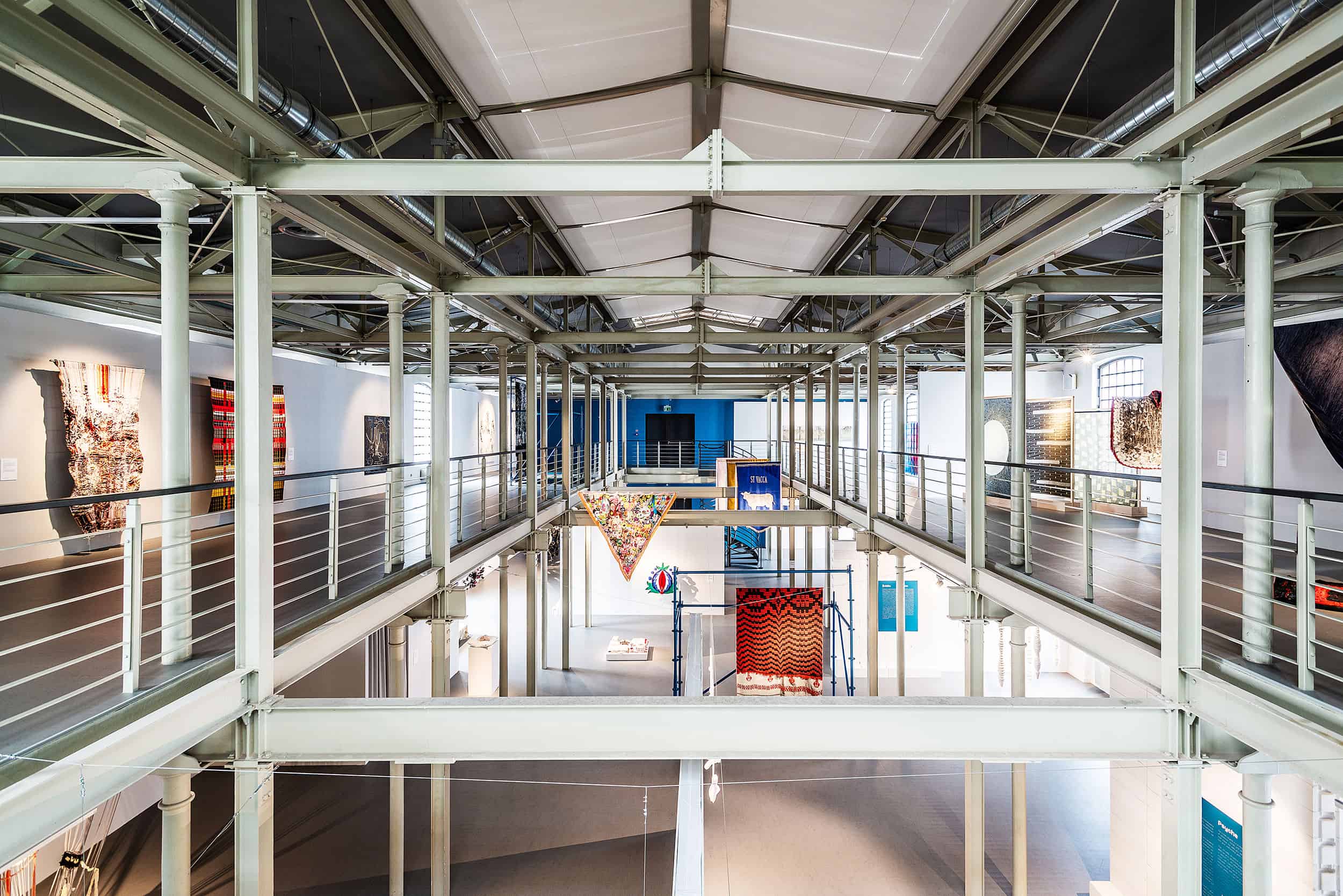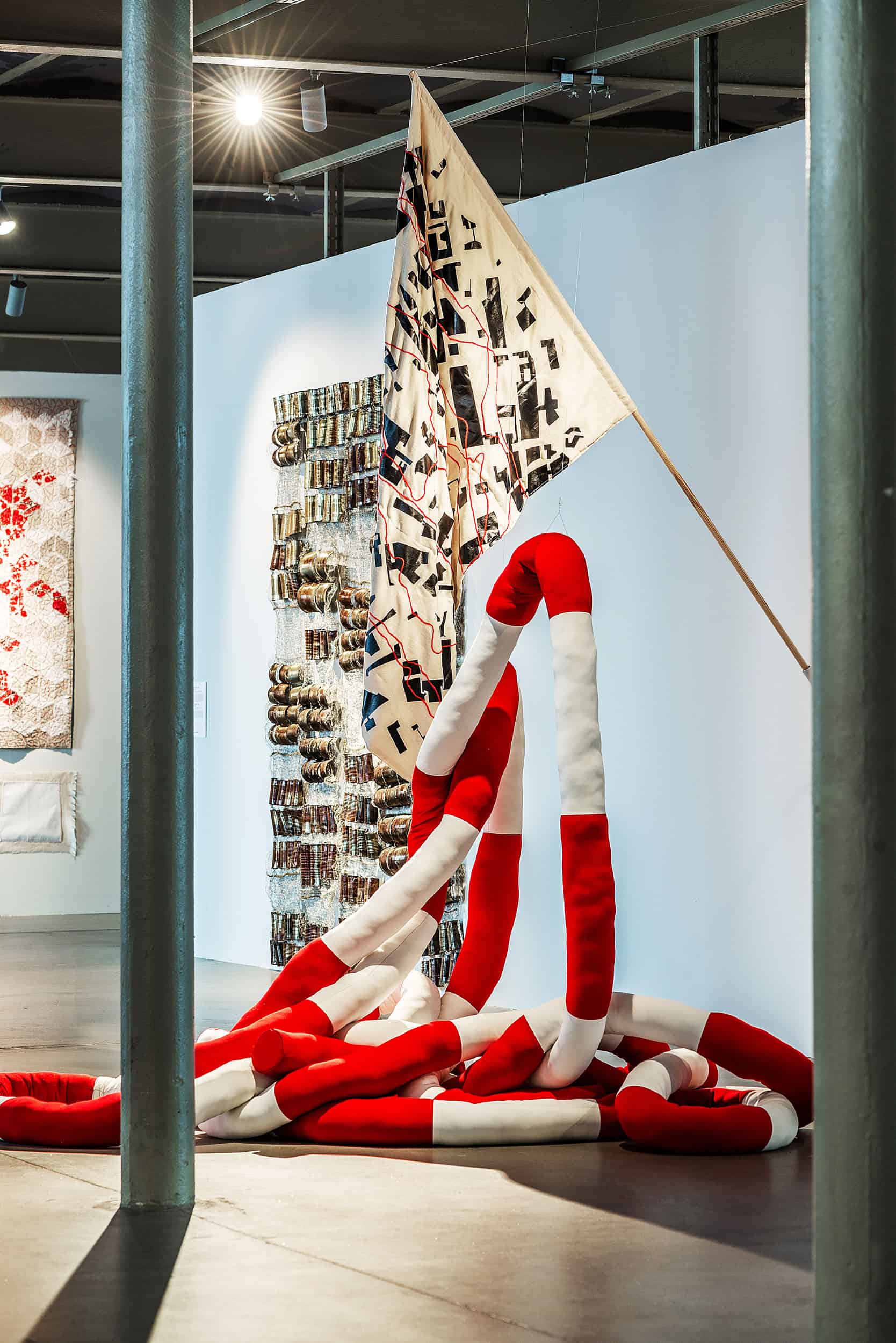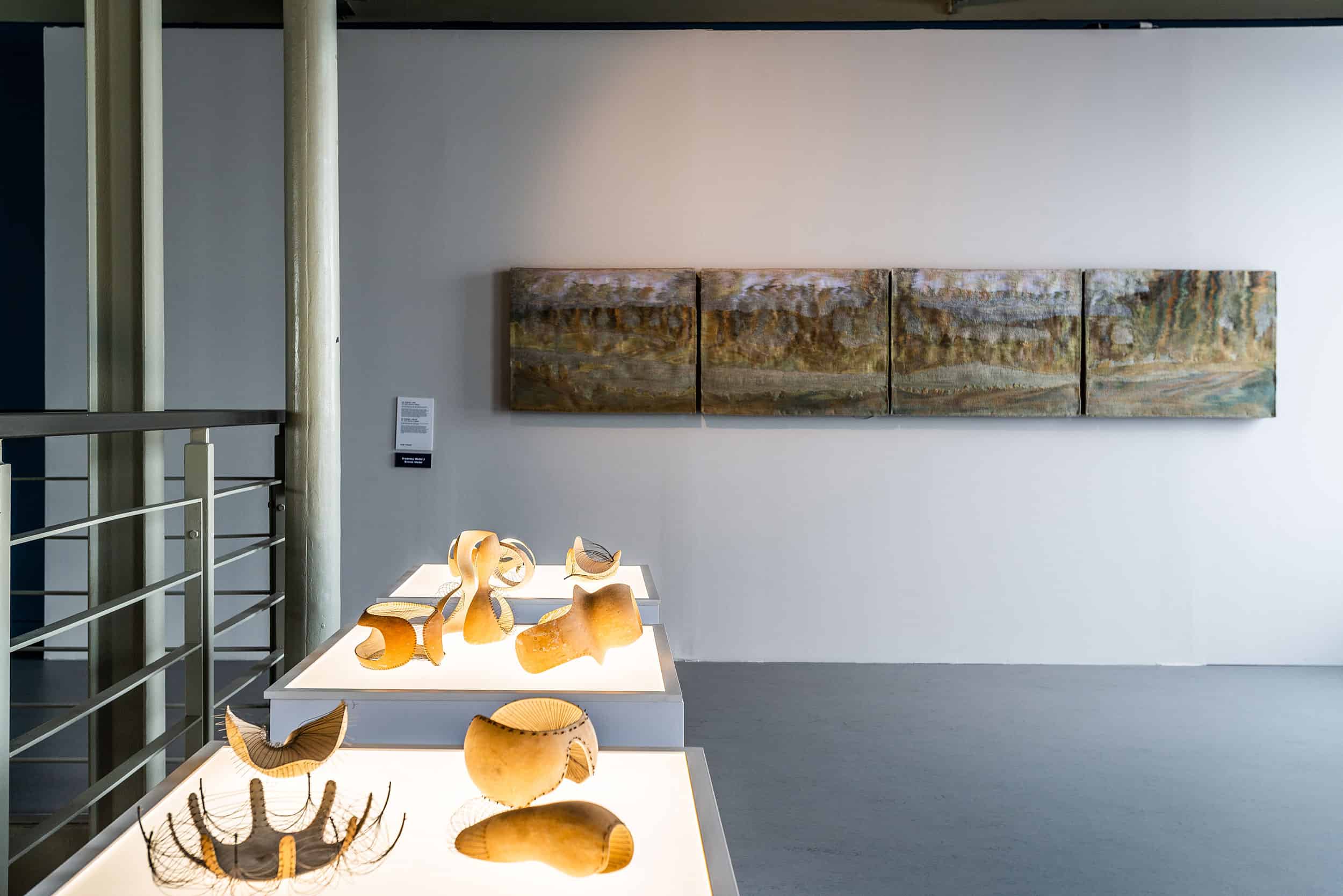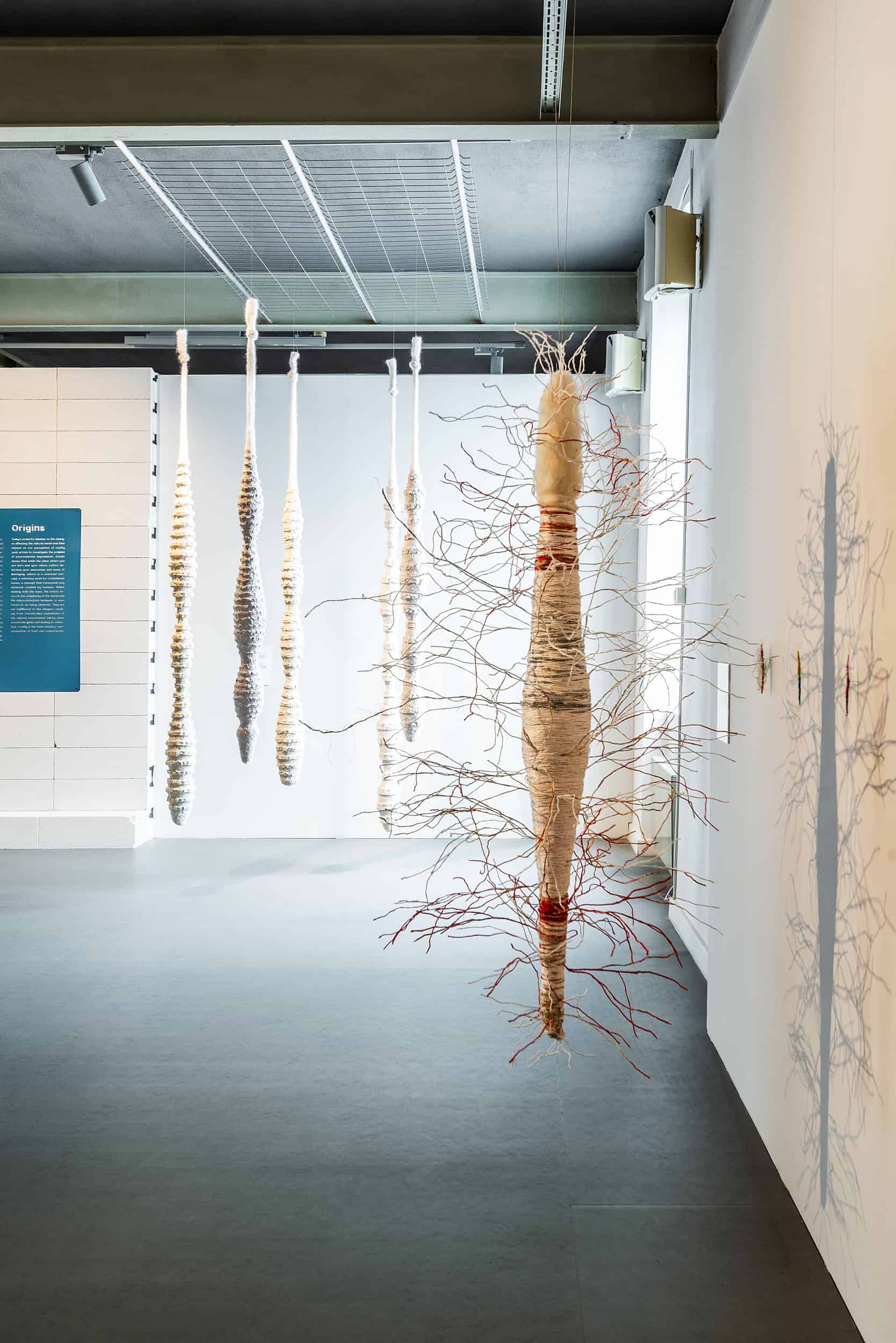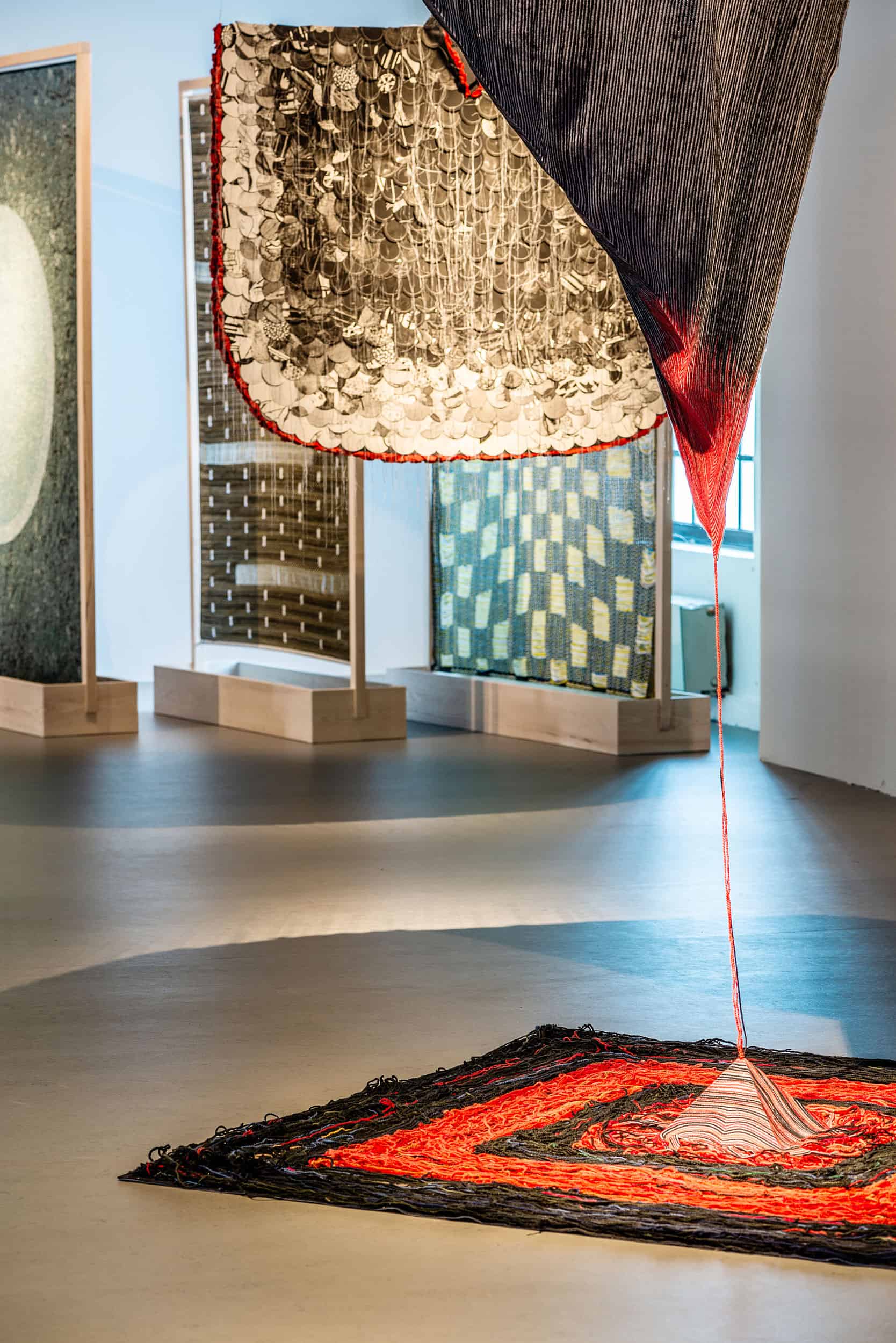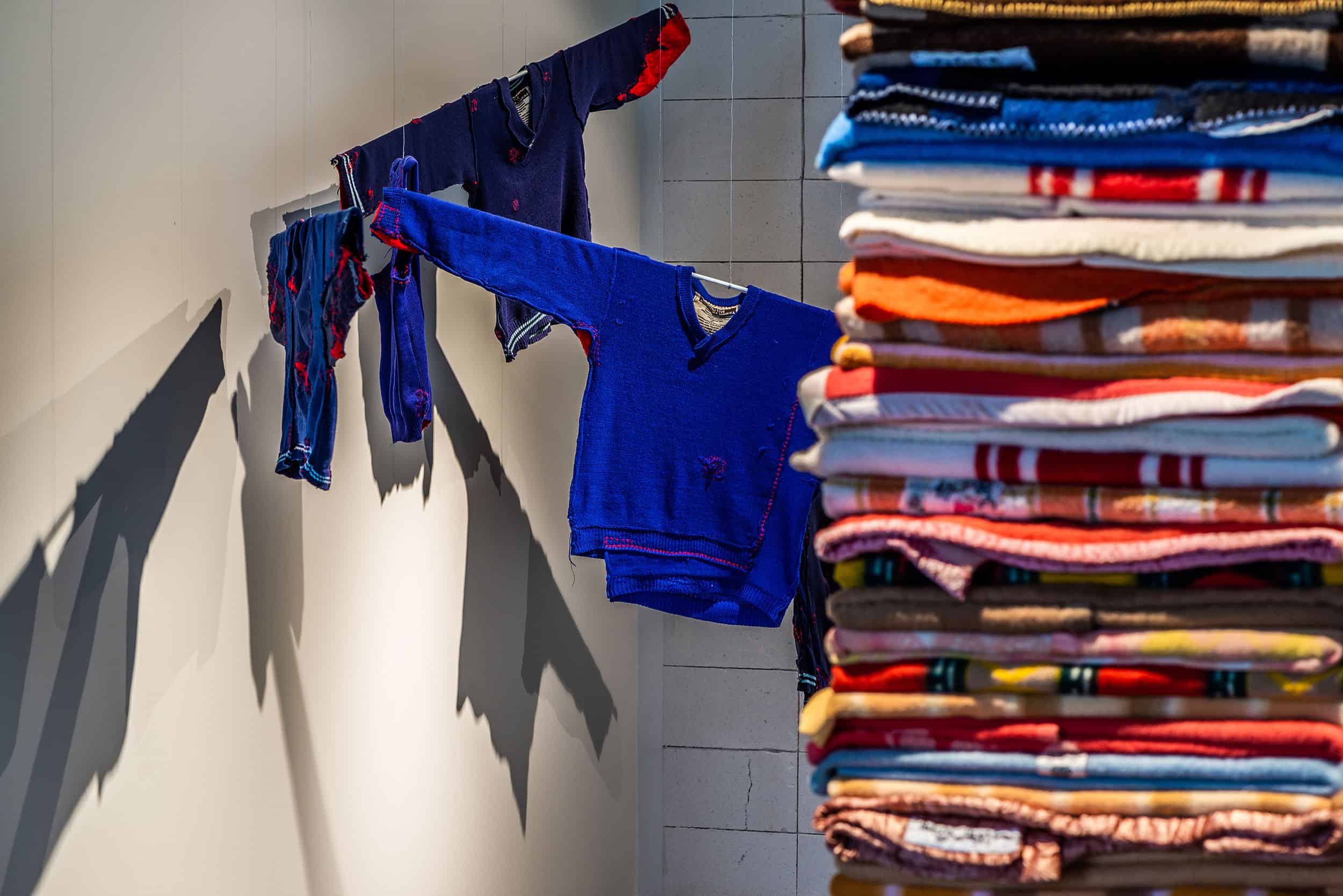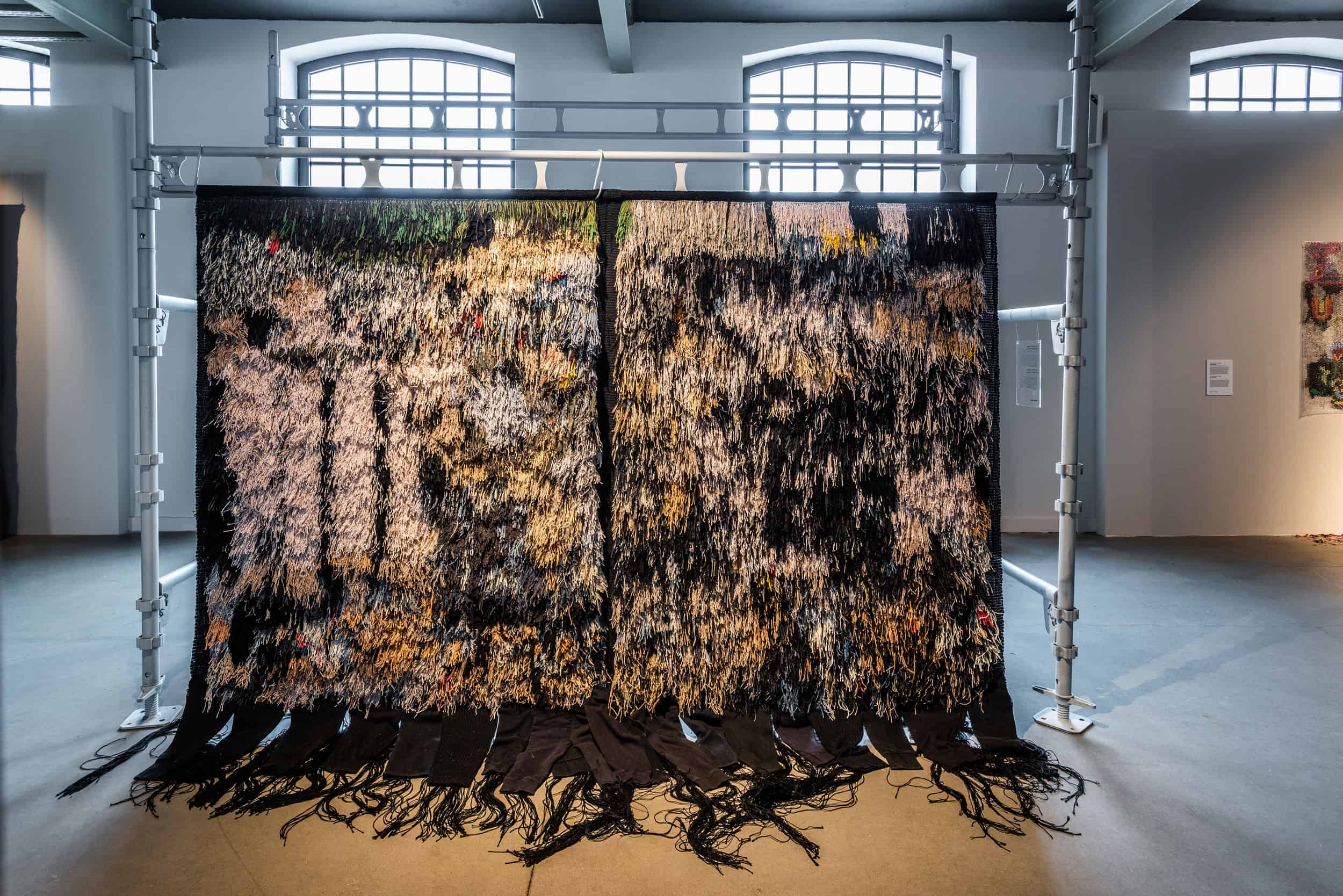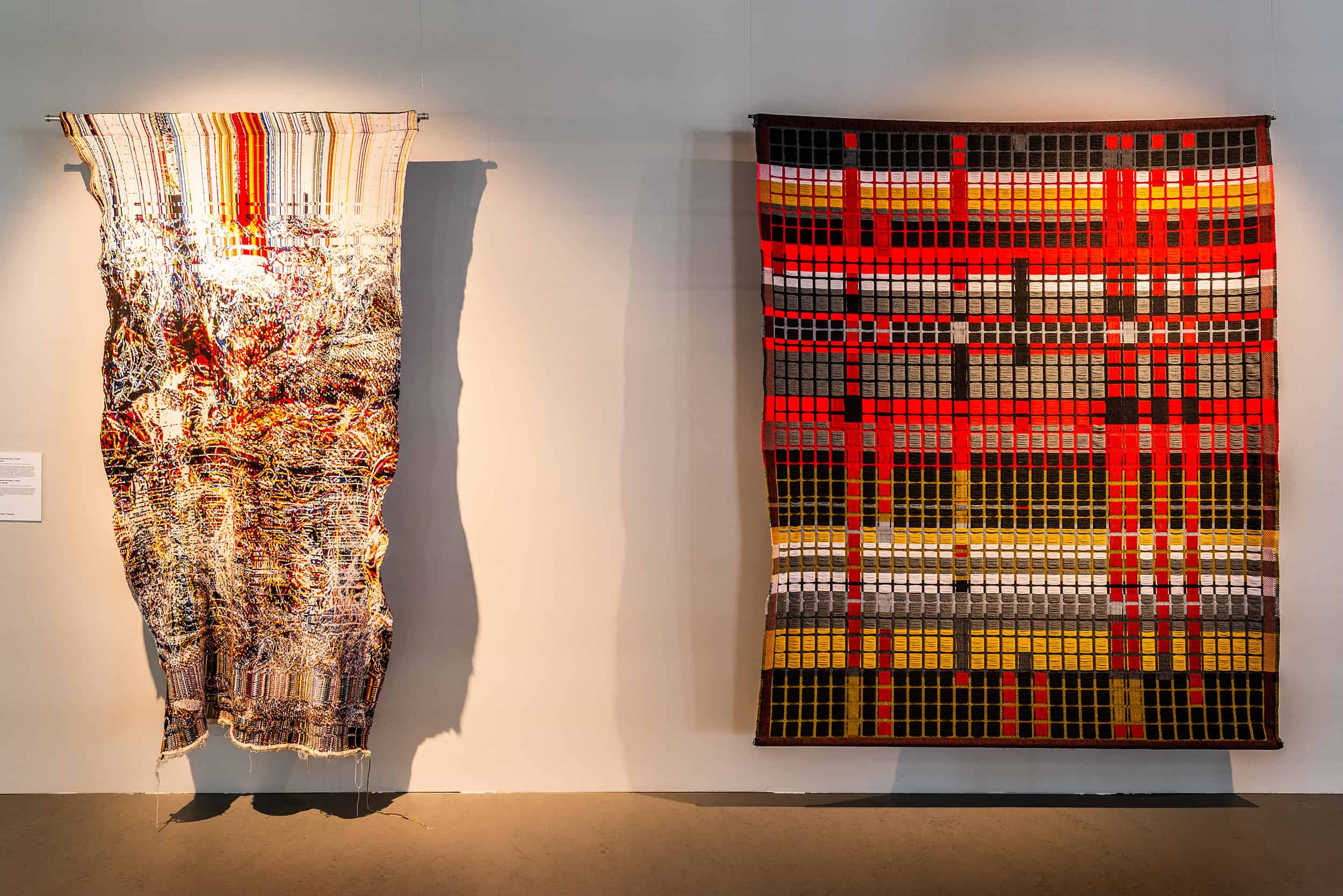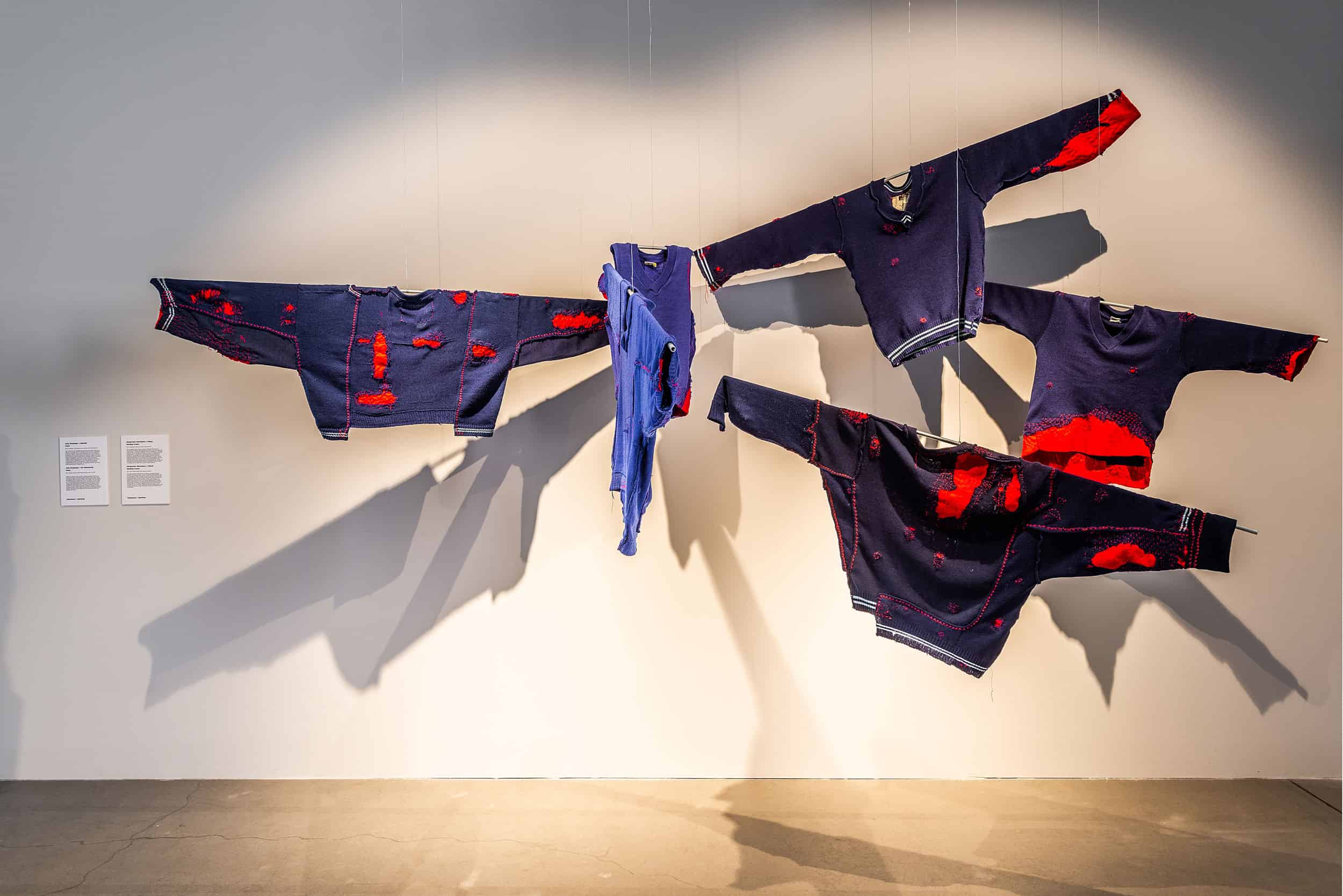It should be the last week of the 16th International Triennial of Tapestry in Łódź – the oldest and the most important presentation of phenomena connected with the medium of textiles. Due to the current global situation with COVID-19 and obligatory closure of the Central Museum of Textiles in Łódź to the public the upcoming events will be rescheduled.
On this occasion we would like to invite you for an online viewing.
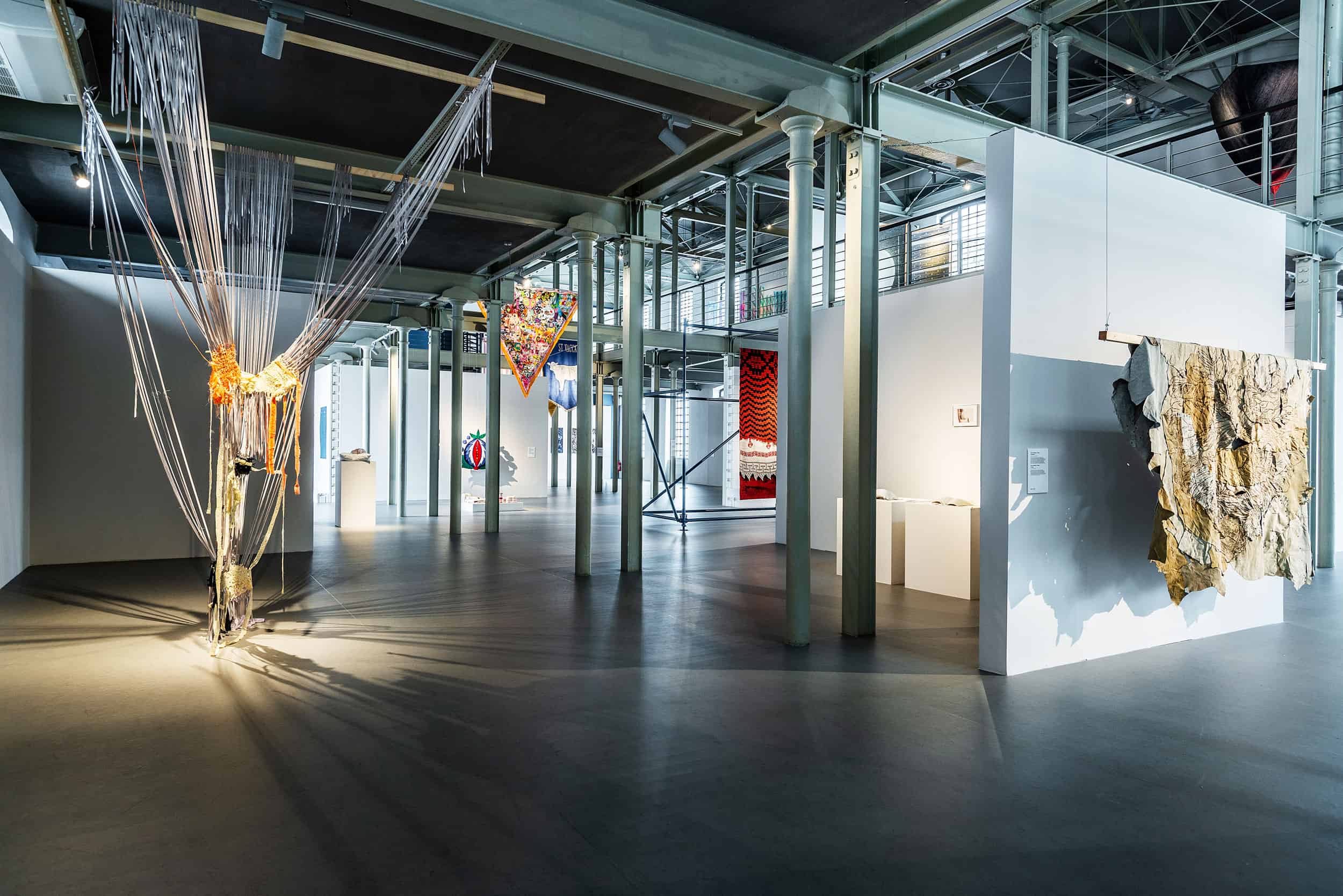
16 th International Triennial of Tapestry, Łódź 2019, photo: Norbert Piwowarczyk © Central Museum of
Textiles in Łódź
We prepared for you a photo report on the Triennial accompanied by a commentary from the curator – Marta Kowalewska.
“The interest in textile arts was renewed in the second half of the 20th century. At that time new means of expression with the use of fabrics were actively searched and new meanings were assigned to created works. The whole process was popularised mainly thanks to the International Tapestry Biennials held in the city of Lausanne.”
“Textile art was, for example, exhibited in MoMA in New York City in 1969. The popularity of this form of art dwindled again in the 1980s and 1990s. Nevertheless, for the last few years, we have been witnessing the slow rebirth or renaissance of textile arts.”
“The very idea of organising a festival of textile works in Łódź dates back to the 1960s. At that time Polish textile artists were really successful in Lausanne and the medium we are talking about already became the centre of attention of the international artistic community. The director of the Museum of Textile Industry History, Krystyna Kondratiuk, was the person who initiated works on a festival which could have been organised in Łódź on a regular basis and would attract international artists and audiences. Thanks to her, Polish artists enjoyed such tremendous success during the International Tapestry Biennials in Lausanne in 1962.”
“The first tapestry presentation in Poland took place in 1972 at the main building of Textilimpex textiles company. Already then, the organisers wished the event gained international character.”
The 16th International Triennial of Tapestry in Łódź follows a slightly updated formula. As a throwback to its early years, the presentation revolves around a pre-established theme, therefore providing the artists with an opportunity to touch upon the most current and widely resonating issues. Consequently, the tapestry itself can be perceived through the prism of the latest artistic tendencies. The main theme of this year’s edition is “Breaching Borders.” This topic includes many problems of the modern world, which redefine the meaning of the identity of our civilization, ethnic groups, social groups or each of us individually. In the era of accumulation of ever-changing variables, almost all the time we are forced to move the borders of our understanding of reality or to delineate them, say, in the matter of dignity or the sense of personal security. Do we, as a civilization, aim at a world without borders? It seems that borders have a pejorative meaning and their crossing is an expression of freedom. They repeatedly proved to be the source of conflict between those who delineated and maintained them on the one hand, and those who wanted to cross them on the other.
The whole interview with Marta Kowalewska you can find here >>
Can tapestry represent successfully the most pressing issues of the world we live in? Read more >>




